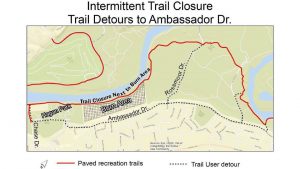Wednesday’s massive storm had rivers rising all around our area. In Sacramento County, the surge of water swept away toxic waste from homeless camps and sent it all downstream.
One section of Steelhead Creek, hit hard by toxic debris from homeless camps, grabbed the attention of geologist Roland Brady.
One day after the storm, Brady came out to see the aftermath.
“I wouldn’t drink it,” Brady said. “I would never drink it. What you’ll see are places that look like a solid waste disposal site, with a creek flowing through it.”
The storm is now sending all that waste through the delta and out to sea.
“And that’s what really frustrates me, is that there’s very good control over just about everything else, but here it just happens in an enormous volume, every time it rains,” Brady said.
Brady is a volunteer steward of a mile long section of Steelhead Creek, where homeless camps have created massive piles of waste and debris.
Photos show the mess along his section of the creek in December, ahead of the largest ever clean up in the creek’s history. Crews removed 100,000 pounds of homeless camp debris
“What we didn’t get, is in the water,” Brady said. “What we did get, is not in the water.”
Sacramento County approved $5 million in increased funds to clean up areas along the American River Parkway last year.
Brady says on Steelhead Creek, east of the El Camino bridge, no agency is claiming responsibility for cleaning as of now.
More at CBSLocal.com >>>

